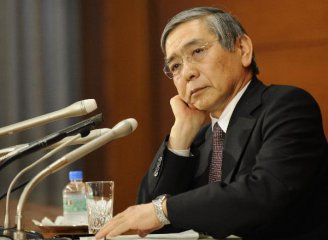
As food prices were boosted the extreme weather and holidays during Mid-Autumn Day and National Day, the year-on-year growth in consumer price index (CPI) continued to expand to 2.5 percent in September, hitting a new high over last 7 months. With CPI continuing to rebound, inflation is expected to increase and there’s even worry about stagflation. But several analysts said that inflation will be mild within this year as CPI lacks surging motivation in the future.
CPI increased by 2.5 percent year on year in September, up by 0.2 percentage points from the previous month, according to National Bureau of Statistics (NBS). This is the third consecutive months for CPI to register over 2 percent and the growth in September hit the highest record within this year.
The significant rise in food prices boosted by extreme weather like typhoon and holidays during Mid-Autumn Day and National Day was the major contributor to the increasing CPI, according to Zhu Jianfang, chief economist of Citic Securities.
It is estimated by the NBS that prices of vegetables, fruits and eggs saw higher increase in the month, which totally contributed about 0.55 percentage points to the CPI growth.
Zhu believed that resulting from the comparison base and potential decline in pork price, CPI is expected to be below 2.5 percent in the fourth quarter and reach around 2.2 percent for the whole year. Inflation is still controllable.
In spite of expansion in CPI growth, the core CPI excluding food and energy edged up by 1.7 percent year on year. The growth fell by 0.3 percentage points from the previous month and hit a new low over past two years.
“The CPI increase continued to move up after May which was mainly driven by rising food prices and crude price. However, core CPI didn’t gained significant growth but dropped sharply instead. Therefore, commodity prices are stable on the whole without pressure on inflation,” said Liu Xuezhi, senior researcher at financial research center of Bank of Communications.
Data from the NBS also shows that the producer price index (PPI) rose by 3.6 percent year on year in September. This is the third consecutive month that the PPI growth slows. Among major industrial products, fuels, non-metallic mineral products, and chemical fiber reported a significant year-on-year rise in prices. But the growth of most industrial product prices has slowed.
Liu Xuezhi said that as the fiscal and financial policies are moderately loose and support infrastructure investment, this might drive up industrial products. Due to the significant decline in the PPI hikes in the fourth quarter, the new price increase factor the PPI may still have room to fall.
Reporters find that most institutions expect the CPI to increase year-on-year or slightly higher than this year.
The macro research team of China Merchants Securities expects that China will face some inflationary pressure again in the first quarter of next year. Both pork price and vegetable price may rise, but it has not yet seen the driving force to push CPI to hit 3 percent next year.
"The core factor affecting CPI next year is pork prices." In Zhu Jianfang's view, hog supply will enter the bottom of the cycle next year. And the demand will remain basically unchanged. Pork price will show a significant upward trend. It is expected that CPI will reach 2.5-2.6 percent year-on-year next year.
Jiang Chao, chief economist of Haitong Securities, also stressed that in the context of slowing demand, inflationary pressures tend to fall after a short-term rise in the short-term, and there is no need to worry too much about long-term stagflation risks.
Translated by Vanessa & Coral























Latest comments